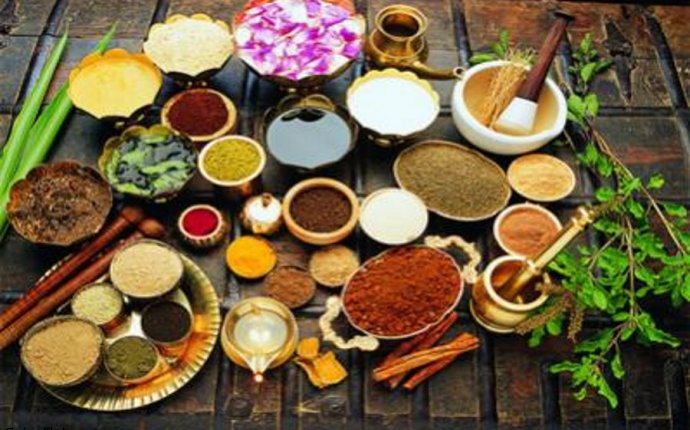
Ayurveda Cancer Treatment
Ayurveda emphasizes both health maintenance (Svasthavritha), and diagnosis and treatment (Athuravritha). Patients are classified by their prominent dosha, or physical, emotional, and metabolic type, Kapha, Pitta, or Vata, each located in specific organs and associated with two of the five elements (earth, fire, water, air, and ether) and five senses. The doshas represent properties shared by the organs, body, environment and cosmos. When a patient’s unique state of dosha is out of balance, illness occurs. Therapy is personalized to the individual’s problems and metabolic characteristics to restore balance through diet and lifestyle modifications, medicinals (herbs, spices, metals and/or animal products), breathing exercises, and meditation. Detoxification (panchakarma) occurs before administration of medicines, which includes bloodletting, induced vomiting, and bowel purging. The therapeutic approach seeks to cure disease by reversing the steps that led to it (e.g., administering cooling medicines if Pitta, the hot dosha, is predominant) .
Maharasnadi Quathar, a medicinal used to treat rheumatoid arthritis, increases antioxidant enzyme activity, decreases TBARS generation, and improves symptoms in human subjects . Many of the more frequently used herbs, such as ashwagandha (Withania somnifera), guggul (Commiphora mukul), Boswellia (Boswellia serrata), gotu kola (Centella asiatica), curcumin (Curcuma longa), ginger (Zingiber officinale), aloe (Aloe barbadensis), and garlic (Allium sativum), have been studied extensively in vitro and in vivo and show antioxidant, antitumor, antimicrobial, immunomodulatory, or anti-inflammatory properties. The herbs most often used to treat diabetes, Gymnema sylvestre, Momordica charantia, fenugreek (Trigonella foenum-graecum) Coccinia indica, and Pterocarpus marsupium, show hypoglycemic activity in vitro and in vivo. Mucuna pruriens, used in preparations for Parkinson’s disease, contains L-dopa . Rasayana herbs (said to promote positive health) such as ashwagandha, Asparagus racemosus, Emblica officinalis, Piper longum, and Terminalia chebula showed immunostimulant and adaptogenic activities in an animal study . Ayurvedic gold preparations (e.g., Swarna Bhasma) have antioxidant and restorative effects in animal models of ischemia . The herbal mixtures Maharishi Amrit Kalash-4 and -5 have antioxidant properties, inhibit LDL oxidation in vitro, inhibit platelet aggregation, and cause a reduction in aortic arch atheroma in hyperlipidemic rabbits .
An in vitro study investigated the activity of extracts from eight plants that are traditionaly used as immunomodulators in Ayurvedic medicine against HIV: Allium sativum, Asparagus racemosus, Coleus forskohlii, Emblica officinalis, Glycyrrhiza glabra, Piper longum, Tinospora cordifolia and Withania somnifera . The study found that these extracts significantly reduced viral production in human lymphoid CEM-GFP cells infected with human immunodeficiency virus (HIV-INL4).














